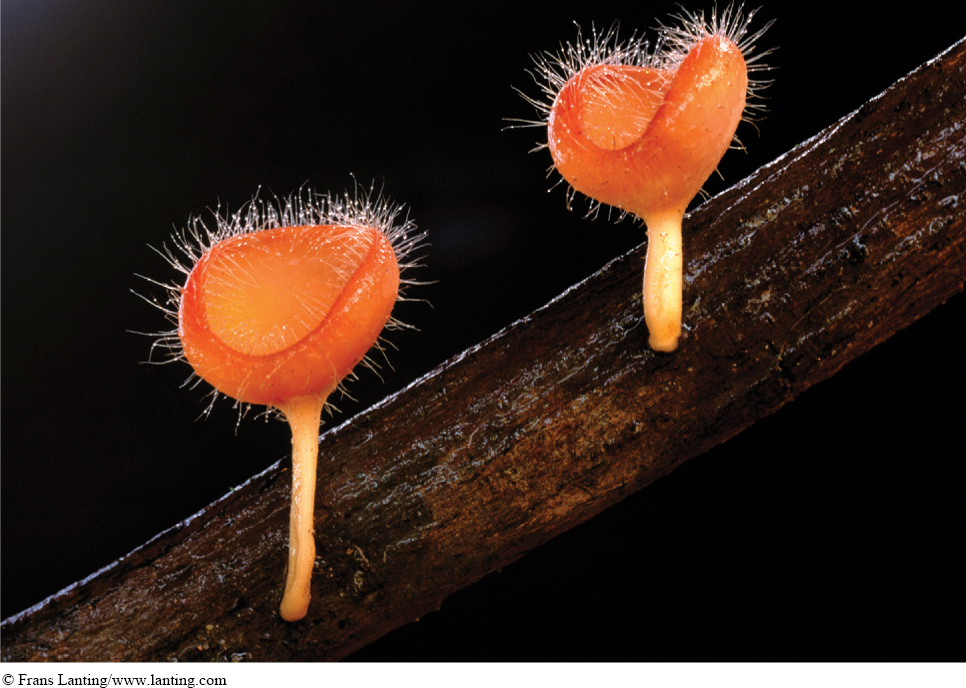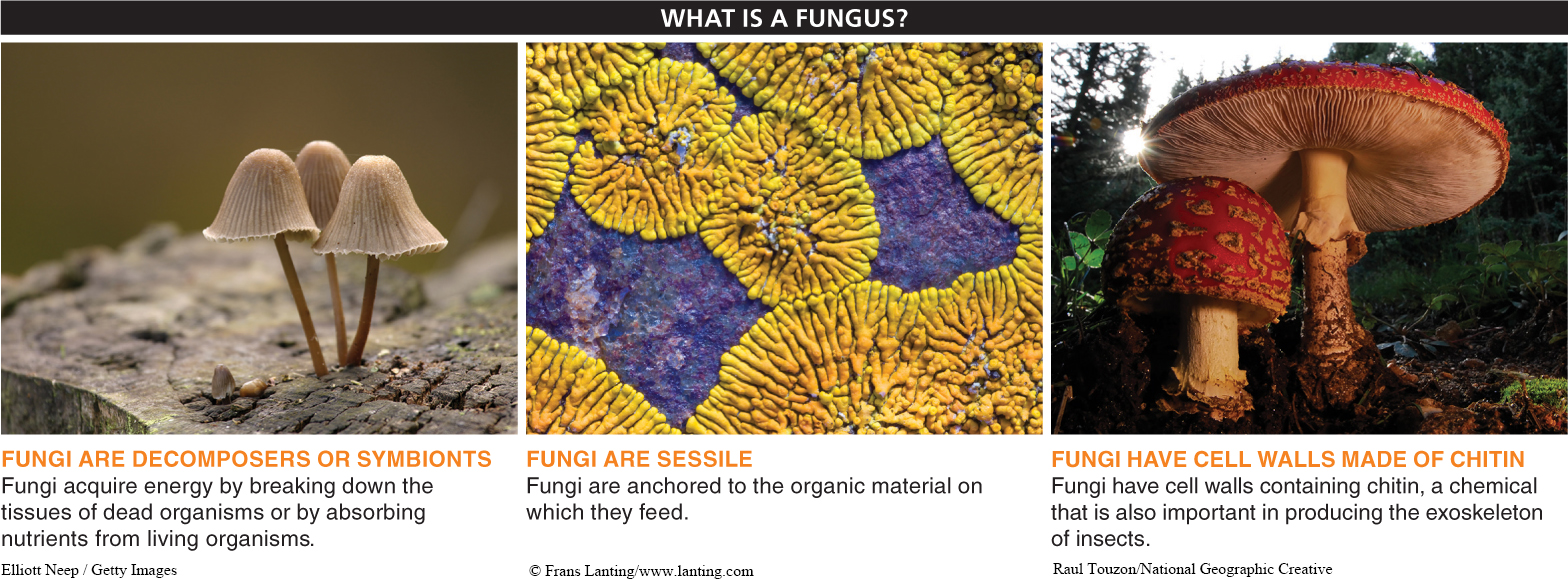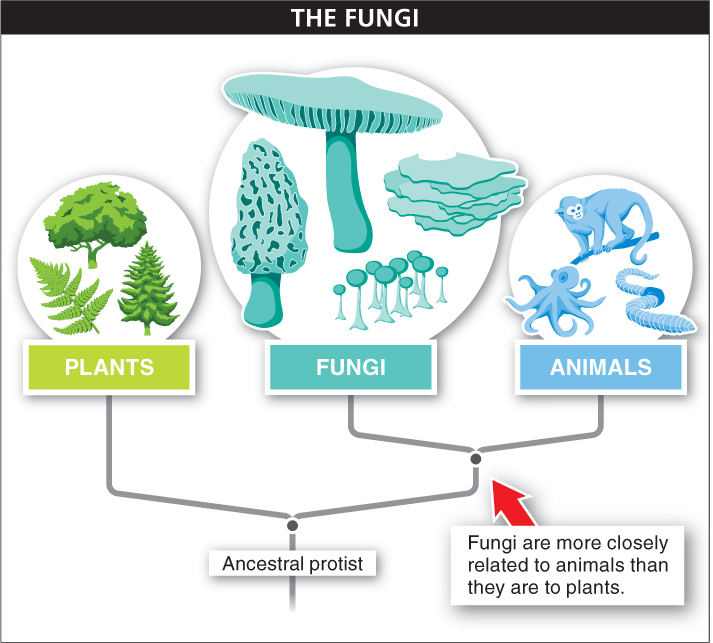
Think about your toes for a minute. Have you ever had an itchy burning sensation between them? Almost all of us have athlete’s foot at some time during our life. One study found that 15% of all people in the United Kingdom currently had this fungal infection.
Fungi make up their own monophyletic kingdom (see Chapter 10) within the eukarya domain. Most fungi are multicellular, sessile decomposers (FIGURE 12-28). Although they were originally thought to be plants lacking chlorophyll, it turns out that they have little in common with plants. In fact, DNA sequence comparisons reveal that fungi are more closely related to animals than they are to plants (FIGURE 12-29). As eukaryotes, fungi have all the basic cellular components you would expect to find: nuclei, mitochondria, an endomembrane system, and a cytoskeleton. They also have cell walls, but the cell walls, instead of including cellulose, as in plants, are made of the carbohydrate chitin, a chemical also important in producing the exoskeleton of insects.


Fungi most likely arose from a unicellular, flagellated, aquatic protist more than 500 million years ago (and possibly as long as 1.3 billion years ago). Close to 100,000 species of fungi have been described, but the total number of species is estimated to be about 1.5 million. These species are divided into about seven phyla, but the overall phylogenetic classification is still very much in flux, with many of the relationships unresolved. Molecular evidence is, increasingly, guiding the process. About 98% of the described species belong to two monophyletic phyla, Ascomycota (about 64,000 species) and Basidiomycota (about 31,000 species). Besides these phyla, the two phyla with the largest numbers of described species are Microsporidia, with about 1,300 species, and Chytridiomycota, with about 700 species. These two groups, however, are not monophyletic.
519
The most commonly encountered types of fungi are (1) yeasts (the only single-

The fungus that causes athlete’s foot is multicellular and consists of thread-
Unless you have an active athlete’s foot infection right now, however, your most recent encounter with a fungus was most likely when you last ate bread. Bread rises because yeast cells are mixed into the dough, which is then kept in a warm place while the yeast consumes sugar and produces carbon dioxide through fermentation. The carbon dioxide released by the yeast makes the dough swell into a loaf.
TAKE-HOME MESSAGE MESSAGE 12.13
Fungi are eukaryotes with the same internal cellular elements as other eukaryotes—
“Fungi are closer to animals than they are to plants.” What does this statement mean?
It means that DNA sequence comparisons have shown that fungi are more closely related to animals on the evolutionary tree of life than they are to plants. Also, fungi cell walls are made up of the carbohydrate chitin, which makes up the exoskeleton of insects, rather than cellulose, which is found in the cell walls of plants.
520